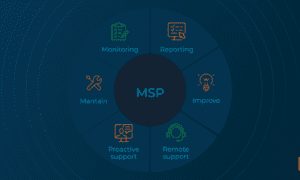In an era where mobility and real-time data are paramount, businesses across various industries are turning to advanced connectivity solutions to streamline their field operations. Enterprise eSIM—embedded SIM technology designed for corporate use—stands out as a game-changer, offering flexible, secure, and scalable mobile connectivity without the hassles of physical SIM cards. Unlike traditional SIMs, enterprise eSIM allows for remote provisioning, multi-network access, and seamless global roaming, making it ideal for distributed workforces. As we delve into 2025, this technology is not just enhancing efficiency but also driving innovation in critical sectors. Let’s explore how it’s transforming field operations in healthcare, energy, retail and logistics, and manufacturing, backed by emerging trends and practical examples.
Healthcare: Enabling Lifesaving Connectivity on the Move
In healthcare, where every second counts, reliable connectivity can mean the difference between timely intervention and critical delays. Enterprise eSIM empowers field operatives like paramedics and home care providers with always-on devices for remote patient monitoring and emergency response. For instance, wearable devices and mobile diagnostics tools can transmit vital signs in real-time, even in remote or cross-border scenarios, ensuring compliance with stringent privacy regulations like GDPR.
A notable application is in global wireless health initiatives, where eSIM facilitates secure, intermittent data transmission for emergency alerts across multiple countries. This reduces downtime and enhances battery life for devices that may operate for years without recharge.
According to market insights, by 2025, eSIM adoption in healthcare IoT is accelerating due to its ability to support low-power networks like NB-IoT, cutting costs while maintaining high security standards.
Field teams benefit from network redundancy, automatically switching carriers during outages to keep communications uninterrupted—vital for ambulance fleets or rural health outreaches.
Energy and Utilities: Powering Smarter Field Management
The energy sector, encompassing oil, gas, and utilities, relies heavily on field technicians who operate in harsh, remote environments. Enterprise eSIM is revolutionising this by enabling smart metering and asset tracking with minimal human intervention. Smart meters equipped with eSIM can be remotely updated and provisioned, supporting long-term deployments without physical site visits.
A compelling case comes from utility companies migrating to advanced networks ahead of legacy system sunsets. For example, large-scale rollouts of eSIM-enabled meters allow for flexible carrier switching, ensuring continuous data flow for grid monitoring and predictive maintenance.
In 2025, as AI integrates with 5G, enterprise eSIM supports these transformations by providing resilient connectivity for drone inspections or sensor networks in wind farms. This not only slashes operational costs—through avoided SIM swaps and optimised data usage—but also boosts safety by allowing real-time alerts for field workers in hazardous zones, like oil rigs or power lines.
Retail and Logistics: Streamlining Supply Chains with Seamless Tracking
Retail and logistics thrive on agility, with field operations involving delivery drivers, inventory auditors, and warehouse staff constantly on the move. Enterprise eSIM addresses common pain points like roaming charges and connectivity gaps by offering global, carrier-agnostic access. Devices such as handheld scanners or vehicle trackers can switch networks dynamically, ensuring uninterrupted tracking of goods from warehouse to customer.
In logistics, eSIM’s over-the-air provisioning simplifies managing fleets across borders, reducing deployment times and enhancing scalability for seasonal spikes.
Retail benefits similarly, with point-of-sale systems in pop-up stores or mobile units staying connected without hardware changes. Trends indicate that by 2033, eSIM will dominate enterprise solutions for cross-border operations, driven by its interoperability and cost savings in device management.
For field reps, this means better route optimisation via real-time GPS and inventory updates, minimising delays and improving customer satisfaction in fast-paced environments.
Manufacturing: Boosting Efficiency in Industrial Field Settings
Manufacturing field operations, including on-site assembly, quality control, and supply chain oversight, demand robust IoT integration. Enterprise eSIM facilitates this by connecting machinery and sensors in factories or remote sites, supporting Industry 4.0 initiatives. Its resilience against network failures ensures constant data feeds, crucial for predictive analytics in production lines.
Applications in precision agriculture—a manufacturing-adjacent field—highlight eSIM’s role in monitoring vast areas with low-power devices for soil sensors or automated harvesters.
Collaboration between enterprises and mobile operators is key here, delivering seamless 4G/5G for modernisation.
In 2025, as eSIM integrates with AI, it enables remote servicing of equipment, reducing downtime and travel costs for field engineers. This scalability is particularly valuable for global manufacturers managing dispersed operations, where traditional SIMs fall short in flexibility and security.
The Broader Impact and Future Outlook
Across these sectors, enterprise eSIM delivers common advantages: enhanced security through encrypted provisioning, cost reductions via efficient data plans, and improved sustainability by extending device lifespans. Challenges like initial integration are offset by platforms offering single-pane management and zero-touch deployment.Looking ahead, with projections of billions of eSIM-enabled devices by 2030, its role in hybrid work and IoT ecosystems will only expand.In summary, as industries adapt to a connected future, embracing innovative tools like enterprise eSIM is essential for optimising field operations and staying competitive.



































